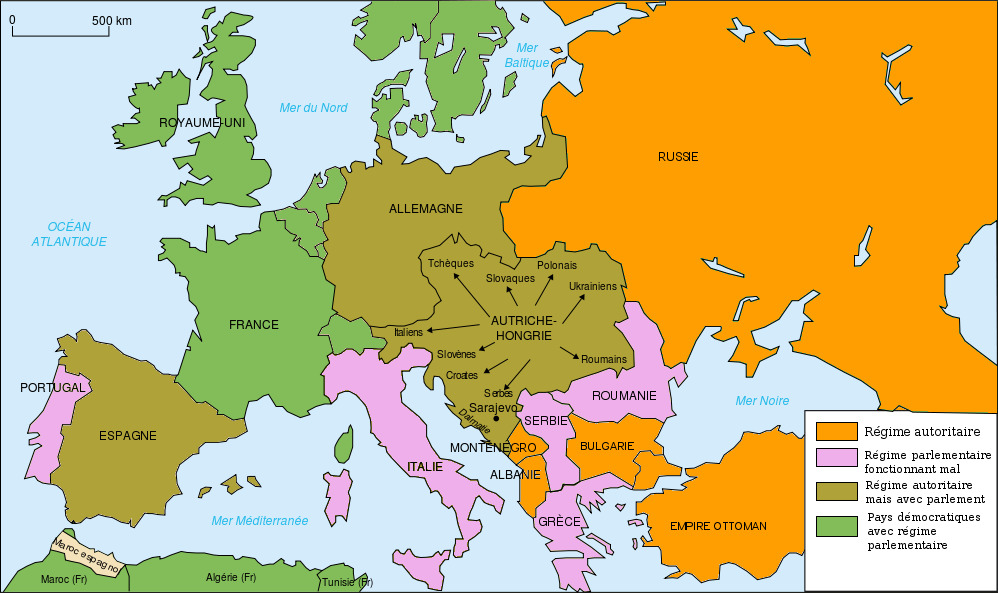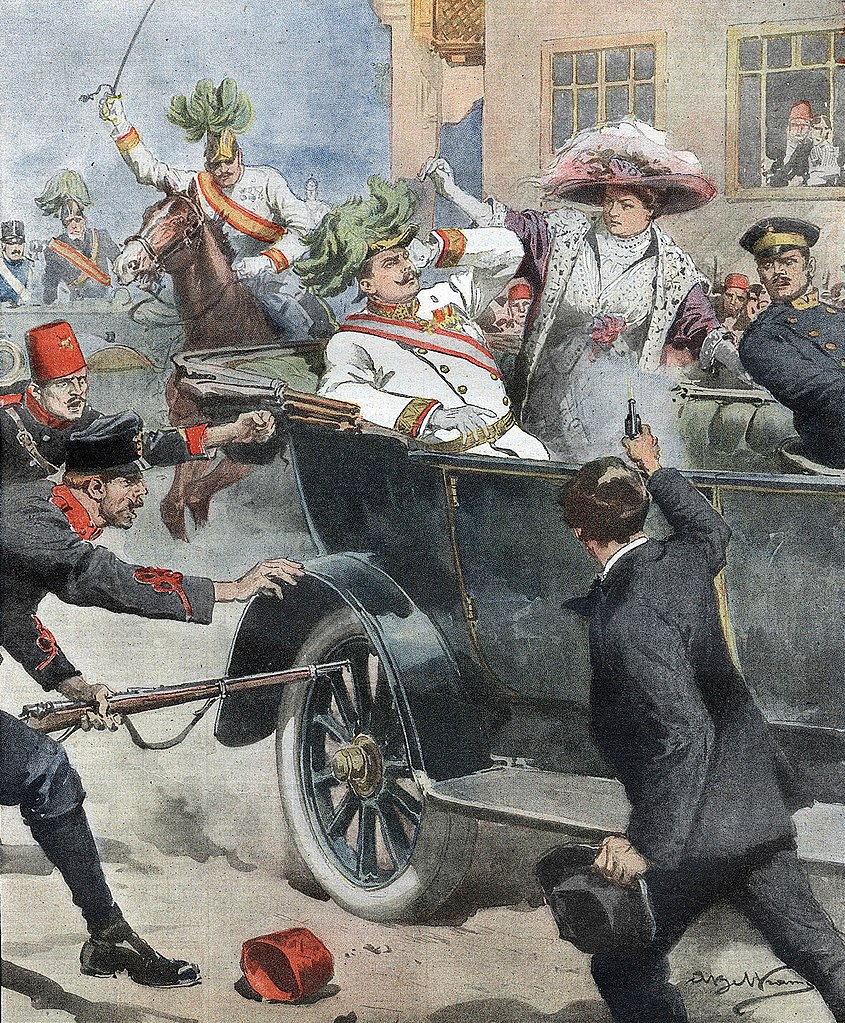How did the assassination of an Austrian archduke end up starting World War I? Let’s find out.

Varmin, 2010 (Wikimedia Commons)
In 1914 Europe was divided into several major players: Great Britain, France, Germany, and Austria-Hungary. Russia, the largest country of all because of its sheer territory, was not considered a major player. It was a country that had a small industrial base but was mostly agrarian based society. Its defeat in a recent war with Japan showed how it was quite behind the Europeans in terms of building up a powerful military to protect its interests. Britain and Germany (with France often supporting, but not always the British) often clashed over colonies and related interests.
The Austrian-Hungarian Empire was the second largest country in Europe after Russia and a multinational state with many different peoples under it. It was also a major industrial power and with its access to the Adriatic, a naval power as well. It was a dual monarchy-Austria Empire and Kingdom of Hungary-and coequal in power. Both states conducted joint foreign relations, defense, and financial policies but left the administration under their individual states. Because it was a polyglot empire, it had a lot of different languages. The major ones were German, Hungarian and Croatian. Because of its industrial capacity, Austria-Hungary was a major exporter of electric home and industrial appliances making it third after the United States and Germany.

12 July 1914, Achille Beltrame
Public Domain (via Wikimedia Commons)
Unrest though within Austria-Hungary had become an issue with various groups wanting independence or territory for their peoples. And on this particular day, the Archduke Ferdinand was visiting the Imperial armed forces in Bosnia and Herzegovina. This area had been annexed by Austria-Hungary in 1908, which angered Serbian nationalists who believed it should be part of Serbia. His visit hatched a plot to assassinate the archduke. 19-year-old Gavrilo Princip shot the royal couple at point-blank range while they were in their official procession. Princip was part of a group that was well armed, trained, and assisted by the Serbian government. Serbia though had a major supporter in Russia. This meant any reaction to Serbian support of the assassination team would draw in Russia, so Austria asked Germany to back them should conflict break out. Germany warned to do it quickly while sympathy for Ferdinand was still high. Austria debated its action, and this took time and was not until mid-July they delivered an ultimatum to Serbia.
Russia though had already decided to intervene while Serbia was preparing its reply. However, the Russian military knew it was not yet ready for a general war. Yet they saw the hand of Germany in the ultimatum and were determined to show support for Serbia. Once the Serbians knew that Russia was mobilizing, that made it easier for Serbia to defy Austria-Hungary. Germany became nervous about the possibility of Russian troops amassing on its border. Russia was allied with France, and Germans had figured on fighting France first rather than Russia. They thought Russia would take longer to get its forces ready. France, for its part, now realizing war with Germany and Austria-Hungary was a real possibility, began mobilizing as well.
Britain, which an informal alliance with France and Russia, was not committed to war with Germany. At that point, they were still on friendly terms and wanted to remain neutral. Germany made some promises to further that neutrality. However, the German plans to invade France would involve it invading Belgium, a neutral state. This upset many in British leadership and it was decided on moral terms they had to enter the conflict.
By the end of July, the assassination of an archduke had become barely remembered as the belligerents all lined up. Germany and Austria Hungary (central powers) vs Britain, France, and Russia. Austria-Hungary declared war on Serbia on 28 July. On 1 August, Germany declared war on Belgium, France, and Russia. On 4 August, Britain declared war on Germany and on 6 August, Austria-Hungary declares war on Russia. The “Guns of August” had arrived, and war would be on until 1918.
The peace that had existed, fragile at best of times, was shattered.
Sources:
The Editors of Encyclopaedia Britannica. (2024, June 18). Austria-Hungary | History, Definition, Map, & Facts. Encyclopedia Britannica. https://www.britannica.com/place/Austria-Hungary
Sullivan, M. (2024c, June 25). Austria’s Archduke Ferdinand assassinated. HISTORY. https://www.history.com/this-day-in-history/archduke-ferdinand-assassinated
July Crisis 1914 | International Encyclopedia of the First World War (WW1). (n.d.). https://encyclopedia.1914-1918-online.net/article/july_crisis_1914
Suggested Reading
Gilbert, M. (2004). The First World War, second edition: A Complete History. Macmillan.
Keegan, J. (1999). The First World War. Knopf.
Tuchman, B. W. (2004). The Guns of August. Presidio Press.
Tuchman, B. W. (1996). The Proud Tower: A Portrait of the World Before the War, 1890-1914; Barbara W. Tuchman’s Great War Series. Random House Trade Paperbacks.
Documentaries & Movies
World War I. (2018, December 11). CBS Mod.
Titanic News Channel is a participant in the Amazon Services LLC Associates Program, an affiliate advertising program designed to provide a means for sites to earn advertising fees by advertising and linking to Amazon.com.
























